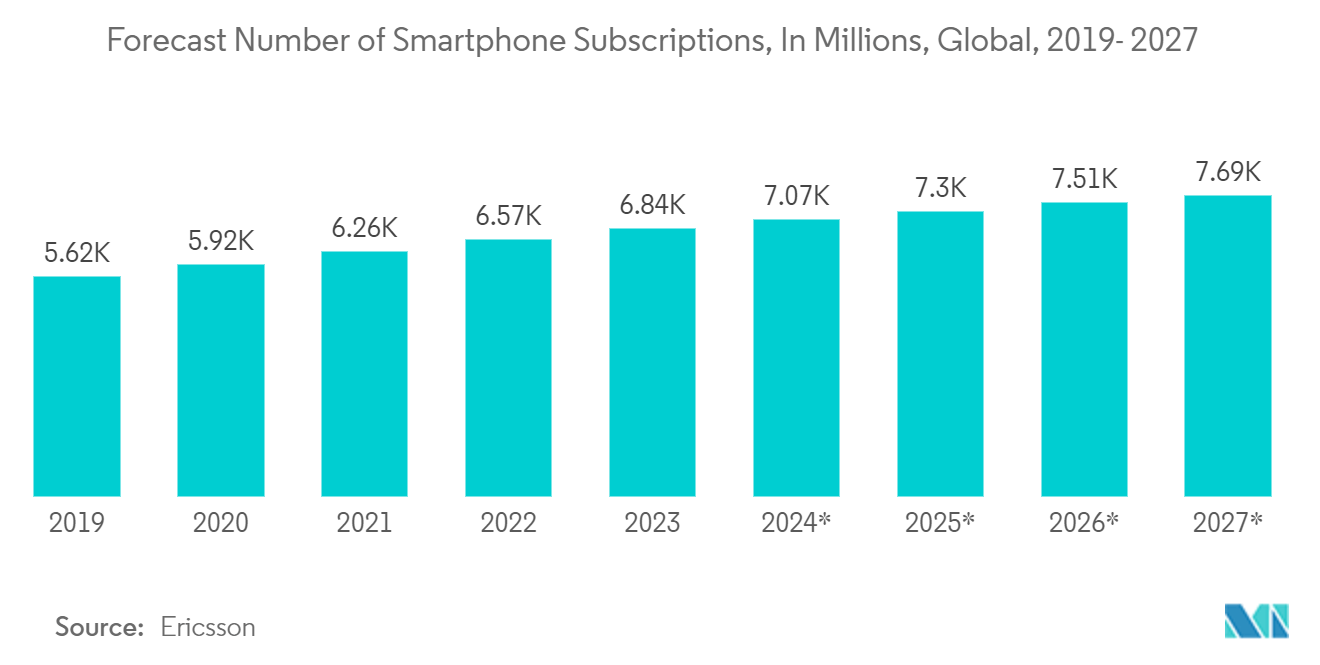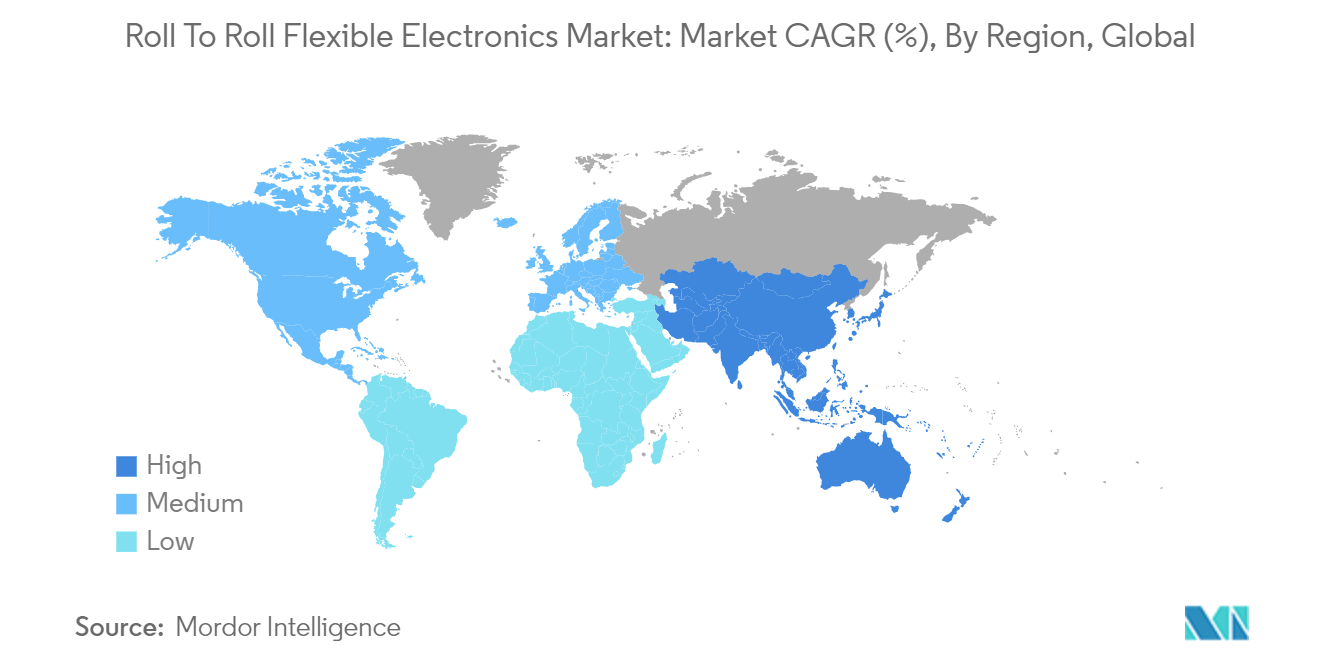Market Trends of Roll To Roll Flexible Electronics Industry
Consumer Electronics to Witness Major Growth
- Consumers increasingly prefer devices that are slim, lightweight, and portable. Thus, the need for lightweight, flexible electronics has increased for devices like smartphones, tablets, and wearables. As a result, to obtain these specifications, manufacturers are shifting to R2R printing, which enables them to manufacture electronic components cost-effectively, flexibly, and on a larger scale.
- The global surge in smartphone adoption, driven by affordable models and widespread internet access, is a primary catalyst for the roll-to-roll flexible electronics market. Countries like China and India, with their burgeoning populations and rising disposable incomes, are emerging as dominant players in the smartphone arena. The increasing penetration of smartphones in these regions is expected to drive significant growth in the demand for flexible electronics as manufacturers seek to incorporate advanced features into their devices.
- The trend toward miniaturization in consumer electronics has significantly driven the adoption of R2R printing electronics. As devices become smaller and more portable, manufacturers are seeking manufacturing methods that can produce components and features on reduced scales, where R2R printing allows the production of thin, flexible, and lightweight electronic components. The lower manufacturing cost and reduced material waste have driven R2R printing adoption among consumer electronics manufacturers.
- Technological trends in consumer electronics are accelerating the demand for R2R flexible electronics. The increasing popularity of wearable devices and foldable smartphones requires flexible displays and other components that can be integrated seamlessly into these devices. In addition, the trend toward ultra-thin and lightweight electronics is pushing manufacturers to explore new materials and manufacturing processes and cater to R2R flexible electronics for consumer electronics products.

Asia-Pacific to Register Major Growth
- In the Asia-Pacific roll-to-roll flexible electronics market, vendors are emphasizing R&D, forging partnerships within the industry, and eyeing potential manufacturing opportunities. Such collaborations enable industrial partners to trial low-volume manufacturing of new products, minimizing risks.
- China's flexible electronics sector has transitioned from being a follower to a dominant leader on the global stage. To capitalize on emerging opportunities, vendors are strategically focusing on industrial layouts, laying the groundwork for the envisioned "China Carbon Valley" industrial base. Their efforts encompass core technology research, innovation and development in flexible electronics, and investing in personnel training to harness the full innovative potential.
- In India, RK PrintCoat Instruments UK, a player in the surface coating domain, teamed up with the National Centre of Flexible Electronics (FlexE Centre) at the Indian Institute of Technology, Kanpur (IITK). Their collaboration focuses on designing, manufacturing, and supplying a specialized roll-to-roll (R2R) pilot line, catering to R&D and prototyping in flexible electronics.
- The Australian Center for Advanced Photovoltaics highlights the evolving landscape of solar energy. While traditional panels and batteries will maintain their significance, the next two decades promise breakthroughs in PV technology. Innovations like thin, flexible films and solar windows are on the horizon. To align with Australia's net-zero goal by 2050, the solar sector must double its contribution from 20% to 40% of electricity demand by 2030, aiming for a 100% renewable target by 2050.


